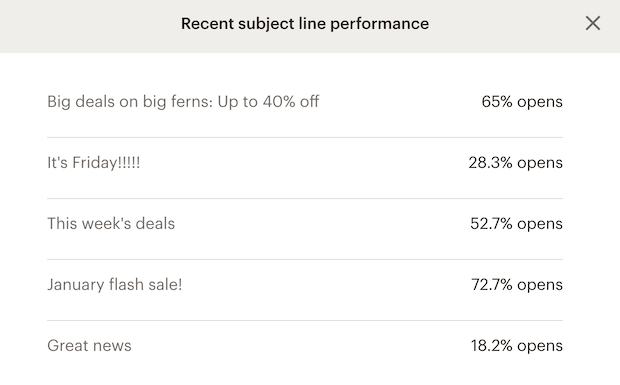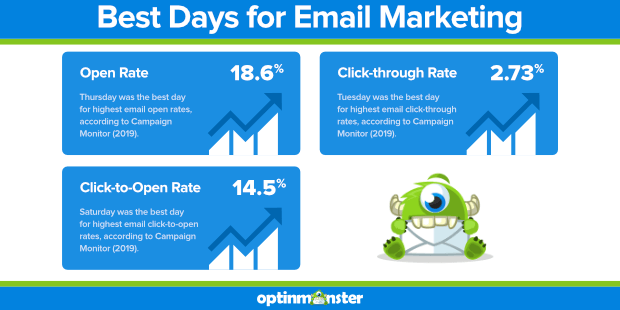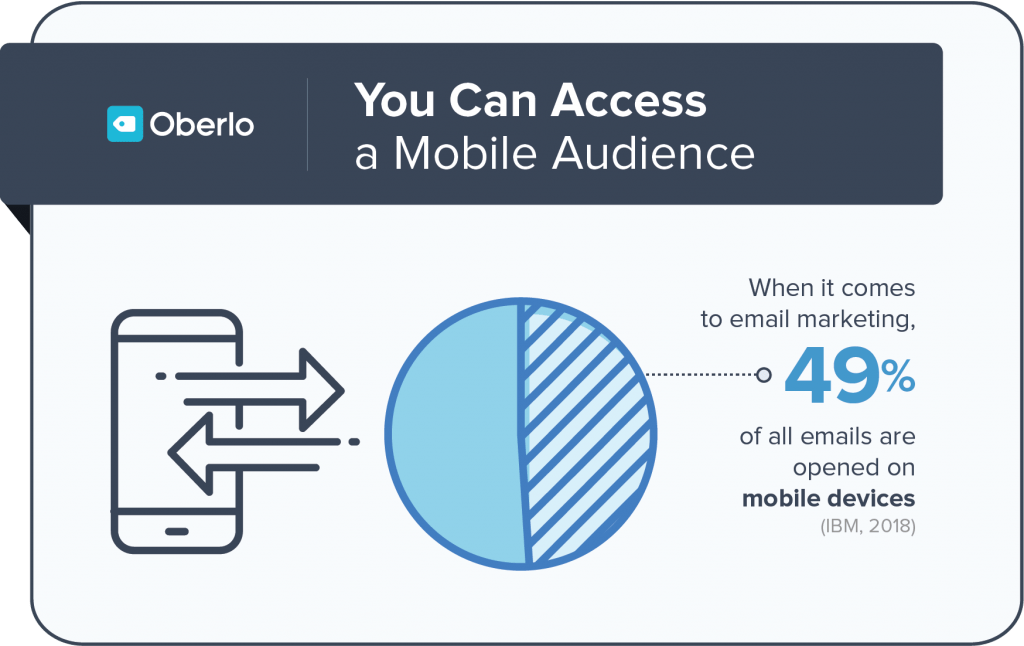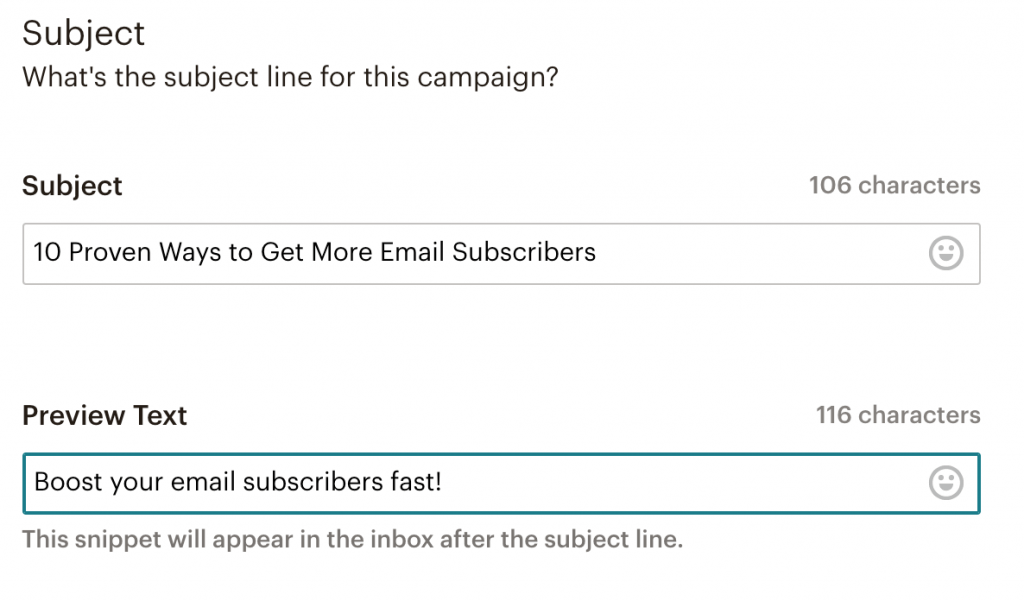The money is in the email list, right? I am sure that you’ve read this before but in order to take advantage of your list, you first need to improve your email open rates.
According to recent studies, the average email open rate for all industries is 21.3%. This means that 8 out of 10 emails you send out will never be opened by their recipients.
This is a huge number and things can get worse if your email open rate is not close to the industry average.
Despite these statistics, email marketing is still a great sales tool and every effort you make to improve your email open and click-through rates can positively impact your sales and revenue.
In this guide, you’ll learn 15 easy ways you can use right now that will dramatically increase your email open rates.
Why is the email open rate important?
Maximize your email list potential
Let’s say that you have a list of 1000 subscribers, an email open rate of 10% and a click rate of 2% (the average for all industries is 2.62%).
This means that every time you send out an email campaign only 100 people will open it and only 2 will click a link in the email and visit your website.
If you manage to increase your email open rate to 20%, then it means that 200 people will open your email and 4 will click a link and visit your website. That’s a 100% increase with the same list.
Avoid spam filters
Another reason why email open rate is important that many people neglect is that it can impact the future performance of your campaigns.
When you send out email campaigns that have email open rates that are lower than the expected average, then email spam filters will eventually mark your future emails as spam and it will never reach the inbox of the recipients.
So, it is important to take the necessary actions to maximize your open rates and protect the integrity of your domain and email list.
How to improve email open rate
Follow the steps below to increase your email open rates.
- Optimize your subject lines
- Write to the first person, make it personal
- Stay away from spam filters
- Find the best time to email your subscribers
- Improve email content quality
- Check mobile compatibility
- Clean up your list regularly
- Earn your subscribers the hard way
- Use email authentication
- Segment your list
- Re-send emails to non-openers
- Make it easy to unsubscribe from your list
- Send a great welcome email
- Keep your list active
- Optimize the email preview snippet
1. Optimize your subject lines

The first thing that your subscribers will see in their inbox, is the email subject line. If they find the subject line interesting they may click to see what’s inside, if not they will probably delete the email without opening.
It is not surprising that according to statistics, almost one-third of email recipients open an email because they liked the subject line.
How can you make your subject lines interesting?
- Keep it short, less than 50 characters.
- Don’t make fake promises not supported by the content of the email.
- Don’t use all capitals or exclamation marks
- Avoid words that give the sense that the recipient has to do something hard (like reading a long report) but use words that describe ‘benefits’.
Test different types of subject lines to find out what works for your audience. You can do this through your email marketing tool, or by simply segmenting your list and sending out the same email (with a different subject line) and measuring the results.
2. Write to the first person, make it personal
The first thing to check is that the emails are sent using your name/brand.
Before sending out a campaign, you can configure the “FROM NAME”. This is shown in the first column of the user’s inbox so you need to use something that users can easily recognize.
In my case, I use “Alex, Reliablesoft SEO Blog” which gives users a pretty good idea who is the sender of the email. Having your real name makes the email personal and it’s better than using only your brand name.
The second thing to check is to start the email with the recipient’s name. This helps to avoid spam filters and makes your emails personal.
When someone subscribes to your list, you should make the ‘first name’ field mandatory. Then within your email marketing platform, you can configure the emails to use the name of the recipient in the first sentence.
3. Stay away from spam filters
More than 20% of emails sent never make it to the subscriber’s inbox. Why is that? They get caught by spam filters. Why does this happen?
There are a number of reasons, the most important are:
Subject line – As mentioned above avoid using symbols, exclamation marks and words like ‘Free’, ‘Buy’, ‘Rich’.
When mail servers find these in the subject line they may proactively move the emails to the spam folder. Companies have strict rules about incoming email and you want to avoid that.
Your emails are marked as spam by users – When a lot of people mark your email as spam this passes a negative signal to the spam filters and the end result is all your emails to end up in the spam folder even before people see them. This can happen with Microsoft emails (Hotmail, outlook.com) Gmail and Yahoo.
Too many links in the email content – This is another reason that can lower the integrity of your emails. Avoid having too many links in the content especially if they link to different domains.
Low open rates – As explained above, if your email open rate is low, in the long term this will negatively impact the number of emails that end up in the spam folder.
Familiarize yourself with the requirements of CAN-SPAM – CAN-SPAM is a law related to sending spam email messages.
Even if it’s not made mandatory by your email provided, you need to make sure that you include the following in all your messages:
- Always provide an unsubscribe link that works for at least 30 days after sending an email
- Include your physical mailing address and company name in the email
4. Find the best time to email your subscribers
The best time to send an email depends on your niche and type of email. Some email experts suggest sending emails in the morning while others prefer later in the afternoon when the user’s inbox is not so crowded.
Although there are some industry statistics, the best way to find out when it’s best to email your subscribers is to do two things: A/B testing and use the intelligence of your email marketing software.

Do A/B testing to find out what time/date works best
After you send a couple of email campaigns, analyze your campaign statistics, especially the dates/times that you had most email opens and adjust your sending time/dates accordingly.
Try different day/time combinations for a number of weeks and you will end up with the best time that works for your list.
Let your email marketing software decide the best time to email your list
A faster and easier way is to use the data provided by your email marketing software.
If you’re using MailChimp, they have a feature that tells you when it’s the best time to send an email. This is decided based on past statistics and other factors that MailChimp is using in their algorithm.

5. Improve email content quality
In many cases, people configure their email marketing platforms to send out an email automatically whenever they publish a new post on their blog or website. While this is a great method to save time, it is not the best approach when it comes to the quality of your email content.
Instead of sending automated emails from your RSS feed, try to manually create your emails by making the content more useful and interesting for your readers.
Tell them exactly why you are emailing them (without too many details) and give them easy ways to find out more about your new post or new product by adding clearly identified links in your content.
People that find your content interesting once, will open your emails again and again and this will gradually increase your email open rates.
6. Check mobile compatibility
The majority of people read their emails on their smartphones. This means that if your emails are not optimized for viewing on mobile, you are in trouble.
Take a look at these mobile email statistics and you will understand the importance of sending mobile-friendly emails.

In summary, 49% of email messages are opened on mobile and mobile owners use their phones to check their emails multiple times per day.
There are many tools to help you with previewing and optimizing your emails for different devices, Litmus is the most popular but it’s very expensive for small businesses and bloggers.
A good alternative is inbox preview (which is litmus-powered) that is offered to MailChimp Pro without extra charge. You can learn more here.
Another easy and free way to ensure that your emails are mobile-friendly is to use a responsive email template (check with your email marketing tool) and to make simple tests by opening your emails on different mobile clients. You don’t have to test everything but start with the most popular: Gmail, mail app on iPhone, and Yahoo mail.
7. Clean up your list regularly
A misconception that many people have about email marketing is that the bigger your email list is, the better. This is wrong, a better approach is “the most engaging your email list is, the better”.
For example, if you have an email list of 10,000 subscribers but your open rate is 10% then on average the active people on your list are 1000.
If on the other hand, you had a list of 5,000 subscribers but your average open rate is 25% then you have 1250 active subscribers.
Don’t forget that a smaller list with a higher engagement rate can avoid spam filters compared to a bigger list with a low email engagement rate.
The fastest way to ‘clean up your list’ is to check your statistics and remove subscribers that have not opened an email from you in the last 6 months.
There are of course other ways to ensure that your list is active by asking people to re-confirm their subscriptions every couple of months but this is a more advanced and time-consuming task rather than doing regular cleanups.
8. Earn your subscribers the hard way
It goes without saying but sometimes it’s good to mention it: Do not buy email subscribers. It’s not a good practice, it can damage your domain and reputation and you won’t have anything to gain from them.
Buying email lists from other ‘companies’ will not help you in any way. Sending people emails they did not ask for, it’s a spam action and will definitely lower your open rates with a number of negative consequences.
9. Use email authentication
Email authentication is a way to convince email spam filters that you are allowed to send emails from your domain (using a third-party provider). It’s a bit of technical stuff but successfully implementing email authentication will definitely help in improving your open rates.
Most known email marketing providers (i.e. MailChimp, Aweber) offer this service to their clients and even if it comes at an extra cost, it is certainly something you need to consider.
Basically what email authentication does is to ensure that all emails are sent out on behalf of a known domain and it’s not spam emails that the sender is not known.
10. Segment your list
A very effective technique to increase your email open rates is to use segmentation.
Segmentation allows you to break down a big list into smaller lists based on the preferences of your email subscribers, past activity or website actions.
This makes your emails more valuable to users and this increases email and click-through rates.
For example, in my email list, I have people that are interested in SEO topics only, people that are interested in digital marketing topics and people with different levels of knowledge.
If I send to beginners an article that is more suited to advanced users, it has no value to them and this will reduce open rates.
One of the ways to segment your list is to survey your users. As soon as they subscribe to your list, you can send them an email asking them what kind of content they prefer to receive from you and add them to the appropriate list based on their selection.
This process can easily be automated by your email marketing software and it will help you understand your audience better.
Another way to segment your list (without asking your users), is to send different kinds of emails and then use the email campaign statistics to add users to the different sub-lists based on their actions.
For example, people that open my SEO related emails will go to the ‘SEO list’, people that open email marketing emails go to the ‘email marketing’ list and so on.
11. Re-send emails to non-openers
Another technique that can instantly improve your email open rates is to re-send your email campaigns to non-openers.
This is how it works:
- You send your email campaign.
- In two days, create a new segment and add all subscribers that were sent the campaign but did not open it.
- Re-send the campaign to them with a slightly different subject line.
It’s a very simple technique and easy to implement (most email marketing tools have this ready for you) and can double your open rates.
If you’re already sending out a lot of emails (for example 3 per week), you don’t have to do this for all your email campaigns but only for the important ones.
12. Make it easy to unsubscribe from your list
How is this related to open rates?
When someone wants to stop receiving messages from you, they usually unsubscribe from your list and everything is good.
If the unsubscribe button is nowhere to be found in your email (or too small to see it), they will most probably mark your email as spam so that they don’t get it in their inbox.
If a lot of people do the same thing, your open rates will gradually decrease.
Don’t be offended if someone wants to unsubscribe from your list, it happens all the time so play it safe and give them the opportunity to do so easily.
At the end of the day, you need active people on your list that want to get your emails and not people who don’t want to hear from you.
13. Send a great welcome email
When people subscribe to your list it’s important to send them a great welcome email.
Welcome emails tend to have a high open-rate and if your subscribers like your welcome email, it is more likely to open your other emails as well.
A few tips to optimize your welcome emails.
A/B test different subject lines – The subject line is very important for all emails, including the welcome email. In your subject line make sure that you tell them exactly what’s in the email.
If they have subscribed to download a free ebook from you, make sure that in the subject line it says something like ‘Download your free eBook from Reliablesoft’ instead of ‘Welcome to Reliablesoft’.
I found that having direct and specific messages in the subject line works better than general messages. You can do A/B testing to find out what is working best for your list but don’t ignore this step.
You should aim at an open rate for your welcome email at around 60%. If your percentage is less than that, keep testing different subject lines until you reach close to that number.
Set the proper expectations – Within the email content, you can thank your users for joining your community and briefly explain to them what they should expect from you.
Keep the emails to the point without giving them more information than they really need and don’t make promises you won’t keep.
14. Keep your list active
Don’t forget that your subscribers have voluntarily entered your list because they want to receive emails from you.
Sending them too many emails and spamming their inbox is bad but not sending them any emails at all is not good either.
You should take advantage of the momentum and engage with your audience as soon as they subscribe to your list.
Email automation campaigns can help a lot with this but the bottom line is that you need to keep your email list active.
If you don’t send them emails for a long time and suddenly you decide to start sending email campaigns, it won’t have the same results.
People that regularly engage with your emails are more likely to purchase a product you are selling and become part of your active community.
At the end of the day, this is exactly the purpose of email marketing and the reason you are allocating time, money and effort to build an email list.
15. Optimize the email preview snippet
All major email clients show a message preview next to the subject line. This is an additional line of text that needs to be treated as a second subject line.
Some email marketing tools allow you to specify what to show in the preview. If this is not the case with your provider then make sure that you add a hidden section on top of your emails as described here.
Use the message preview text to give additional information to users and “encourage” them to open your emails. Here is an example:

Key Learnings
The first challenge of email marketing is to get people to subscribe to your list. Once you have this process optimized and you get a constant number of new email subscribers per day, the next challenge is to get people to open and interact with your emails.
The email subject line is the number one factor. If your subject line is interesting more people will open your emails. You can use 20% as your guide.
If your email open rate is around that number then it’s ok, if not then you need to do A/B testing to find out what kind of messages can increase your email open rates.
Besides the subject line, there are other factors that can impact the deliverability of your messages. If many emails end up in the spam folder, then your open rate will be low and you risk damaging the reputation of your domain.
Don’t forget that what is preferable to have a small list of active subscribers than a big list of inactive subscribers.
What other tips can you share for improving email open rates? Let me know in the comments below




Leave a Reply